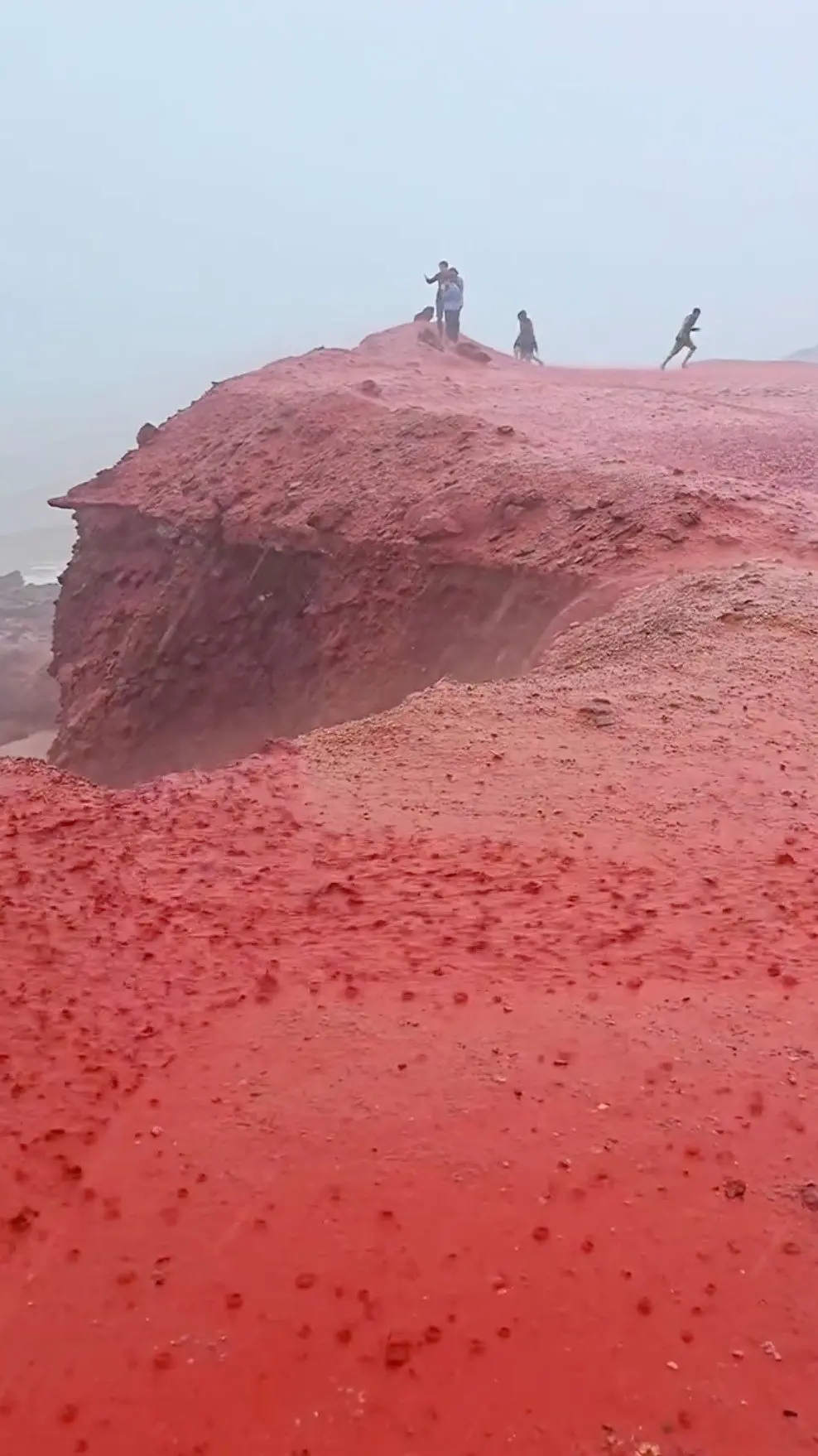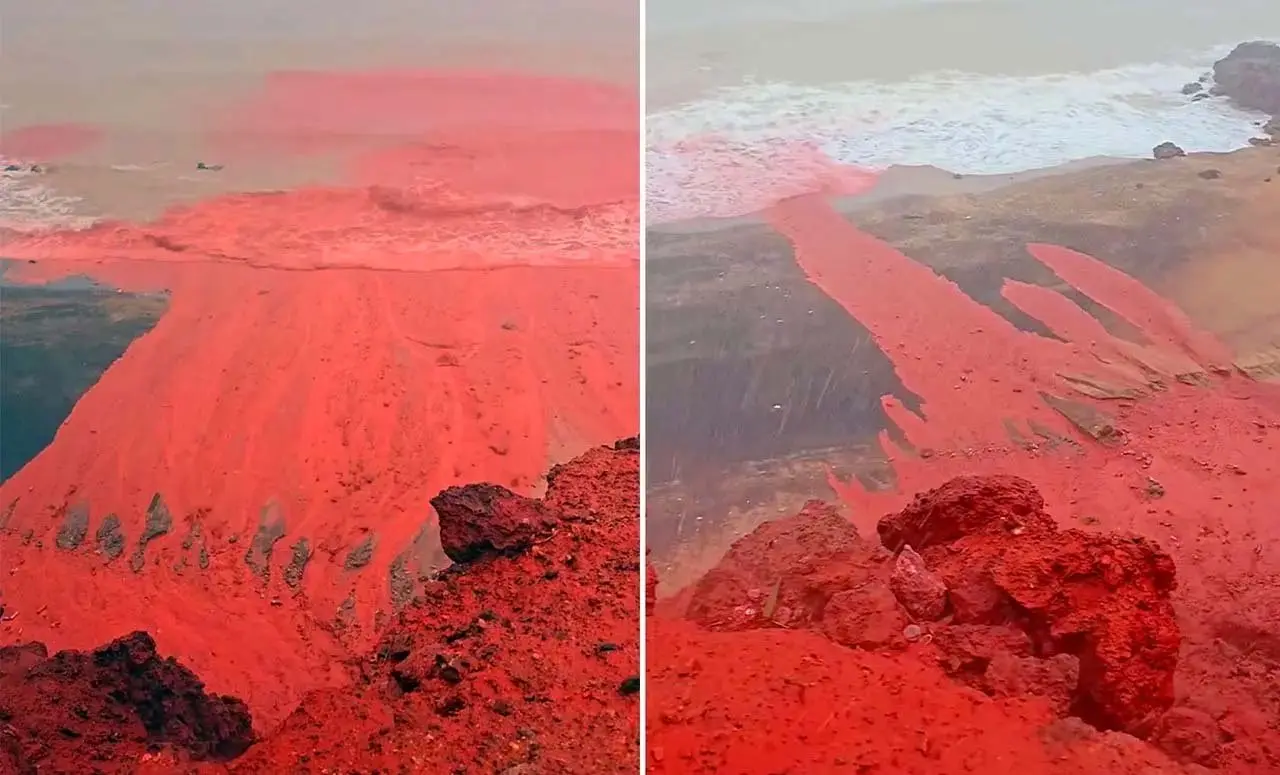In a world where the extraordinary often hides in plain sight, nature sometimes reveals her vibrant artistry in the most unexpected ways. Recently, the quiet shores of Iran’s Hormuz Island became the stage for such a spectacle—one that left locals and global viewers spellbound.
A viral video shared on social media in early 2025 captured a scene so surreal it seemed born of fantasy: red rain cascading down the mountains, turning the beach into a canvas of crimson tides. This rare meteorological and geological event—popularly dubbed “blood rain”—has since become a symbol of nature's quiet power to surprise, captivate, and inspire awe.

The Science Behind the Wonder
Though dramatic in appearance, the phenomenon has a grounded, fascinating explanation. Hormuz Island’s soil is rich in iron oxide, a mineral compound that gives it a deep red hue. When intense rains fall on the island's mountainous terrain, this soil washes down into the sea, transforming the waters into waves of rust-red. What seems eerie at first glance is, in fact, a brilliant collaboration between earth and sky.
This vivid transformation, while visually stunning, is also exceedingly rare—only occurring under specific conditions of rainfall and terrain. It’s this rarity that adds to the mystique, making the “Red Beach” of Hormuz a breathtaking sight for travelers and scientists alike.

A Living Palette of Earth’s Colors
But the island doesn’t only dazzle during storms. Hormuz, often called the "Rainbow Island," boasts over 70 different kinds of colorful minerals. Its beaches and cliffs shimmer with hues of red, yellow, orange, and violet, thanks to layers of clay, carbonates, shale, and volcanic rocks rich in metallic compounds. At sunrise or sunset, when golden light dances off this mineral-rich landscape, visitors often describe the experience as walking through a dream.
Even the soil—locally known as “Gelack”—is not merely a geological treasure. It’s woven into the daily lives of the island’s residents, used in everything from natural dyes and ceramics to local culinary delights like sauces and jams.

A Moment to Reflect, A Call to Protect
In an era where climate headlines often deliver despair, moments like these invite a different kind of reflection. The “blood rain” of Hormuz is not just a natural marvel—it’s a reminder of the extraordinary beauty Earth still holds. It shows us that beneath our feet and above our heads, the planet is constantly creating wonders we have yet to understand or fully appreciate.
This spectacle also renews the call to protect such places. Hormuz Island’s ecological and cultural richness is a gift that demands thoughtful stewardship. From its colorful soil to the communities that call it home, every element tells a story worth preserving.

Where Awe Meets Gratitude
As images and videos of this red tide ripple across the internet, they do more than spark curiosity—they ignite wonder. And in that wonder lies hope. Hope that we can reconnect with the natural world. Hope that we will continue to seek out, protect, and celebrate the beauty around us.
So, let the “blood rain” of Hormuz not just be a fleeting viral moment. Let it be a vivid, lasting reminder: the Earth is not only alive—it’s an artist. And sometimes, all it takes is a storm to unveil her masterpiece.
WATCH THE VIDEO



Leave a Comment